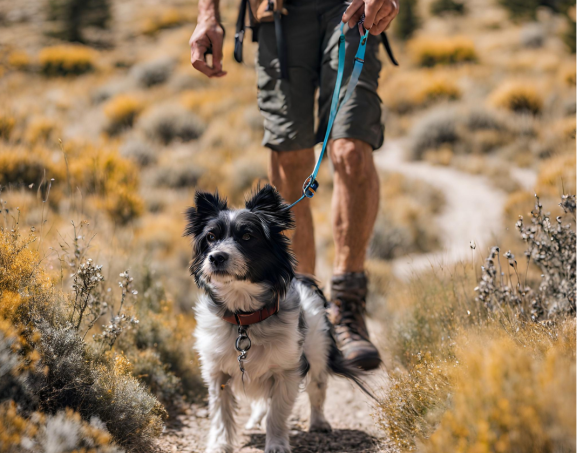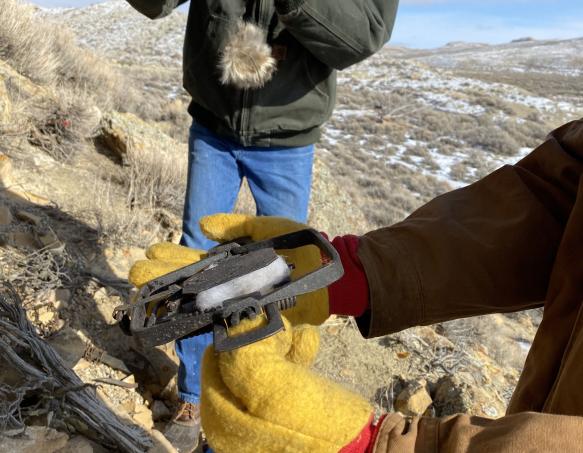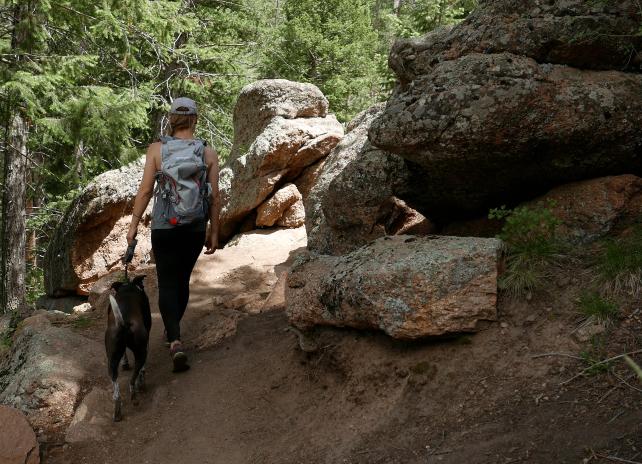
The height of trapping season
October to March
The height of trapping season is October-March when the furbearing animals' fur is at its thickest.
If your pet has been caught in a trap please call 1-877-943-3847 to report the incident.
Pet owners can reduce conflict with traps
Below are a few tips all pet owners should know to avoid conflict with a trap.

How to release your pet from a trap
Knowing how to remove a trap or snare before you recreate outside with your pets is a good idea. Keeping your pet safe is your responsibility. Read about how to release different traps and what tools you may need to carry. If a pet is accidentally caught in a trap or snare, you can remove it with simple instructions and tools.
Release Toolkit
It is helpful to carry a toolkit for trap release. Recommended tools to aid in the release of your pet are listed below.
- Airline cable cutters for 3/16" wire
- Stout rope (3/8"-1/2" in diameter by 8' long) to use as a muzzle so your dog does not bite you are to aid releasing from a body grip trap
- A coat or covering for your dog's muzzle while you release the trap
- A small trap safety for pet owners pamphlet
Recreational Questions About Trapping
-
Answer
Furbearer trapping season generally occurs from October to March, but badgers and wildlife classified as predators can be trapped all year.
-
Answer
Yes. Traps set to catch badgers or wildlife classified legally as predatory animals may be set any time of the year.
-
Answer
It is legal to release your pet or livestock from a trap, but it is illegal to kill or release wildlife caught in a trap or to close, trip, or remove traps set on the landscape.
-
Answer
Print and read this small instruction booklet to be prepared. Call your local game warden to report the incident afterward.
-
Answer
No, but you can educate yourself on where to expect traps through a trapper education class, a trapping mentor, or even your local game warden or biologist.
-
Answer
Creek beds, draws, fence lines, canal banks, prominent rocky hillsides, and private land adjacent to public land are all common areas where trap sets can be found.
-
Answer
The Wyoming Game and Fish regulates furbearers such as badger, beaver, bobcat, muskrat, mink, and marten but does not have regulatory authority over animals classified by statute as predators like coyotes, red fox, raccoons, skunks, and some others.

